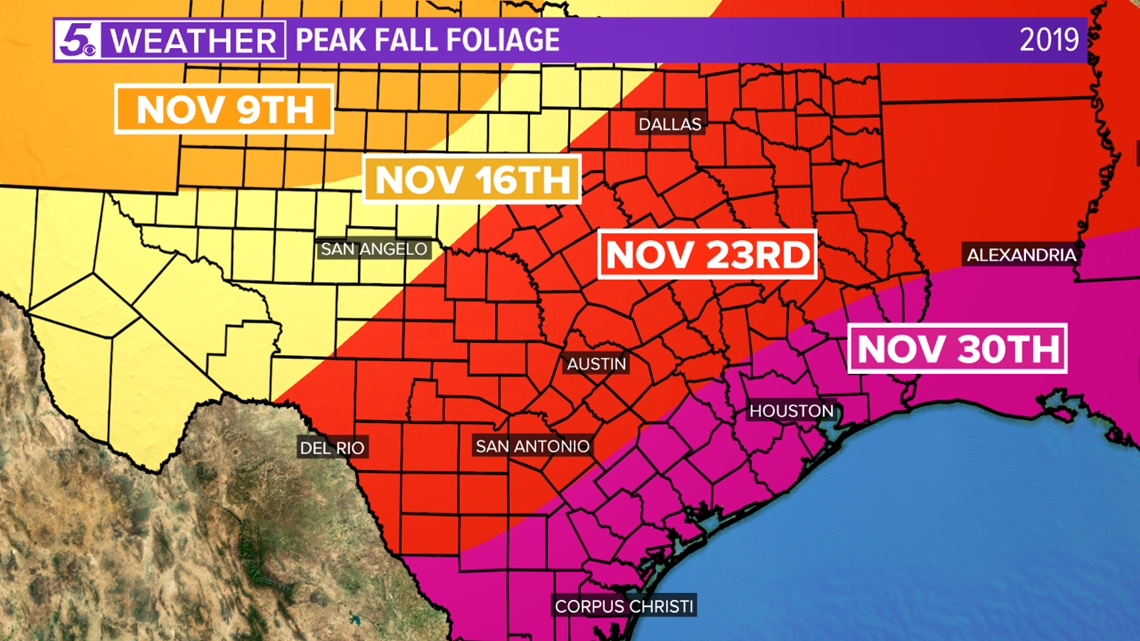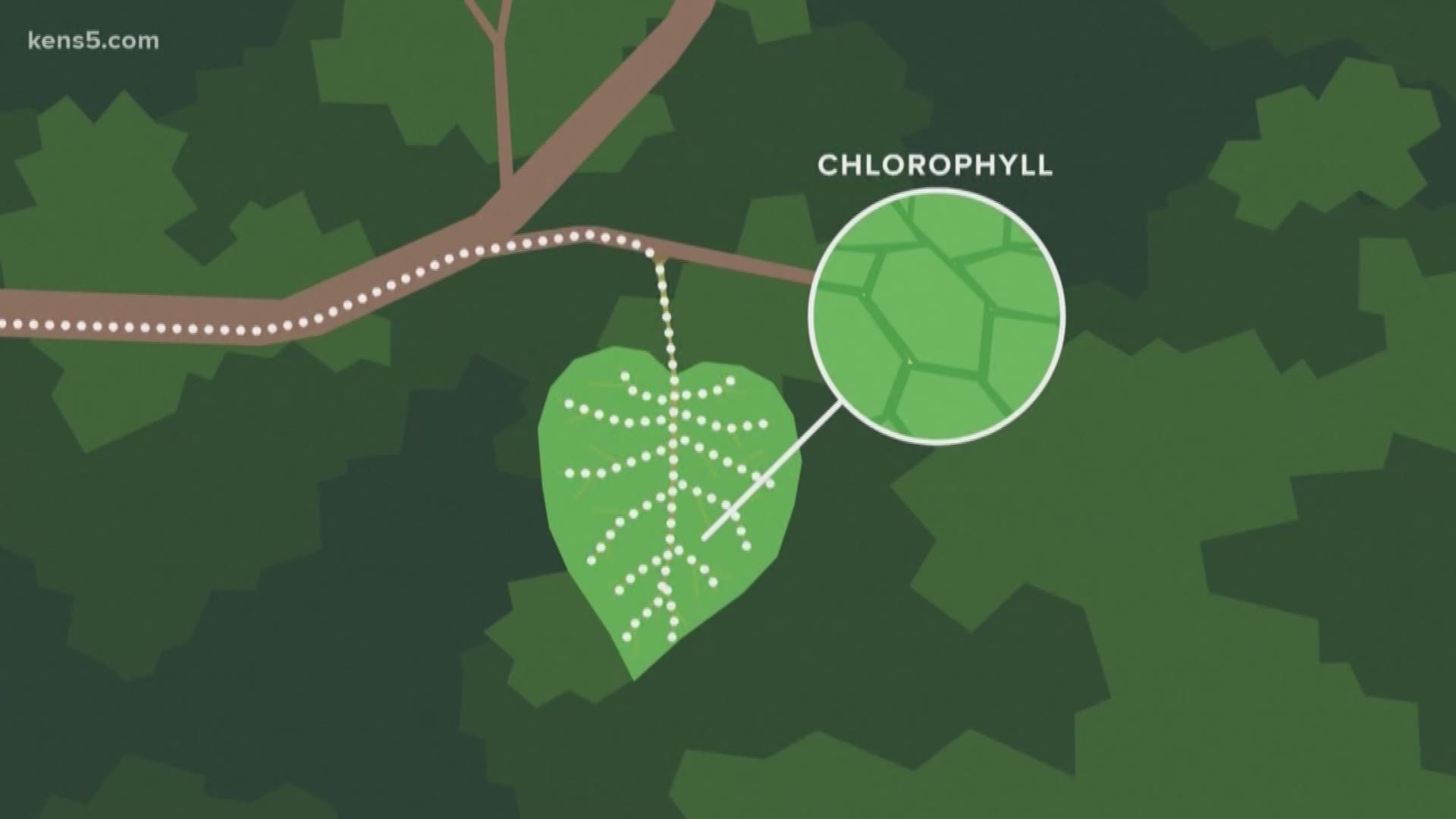SAN ANTONIO — The days are getting shorter and the weather is getting cooler. Shorter days and cooler weather can play a huge role in when our leaves change color.
In the spring and summer, trees make their own food for survival and growth.
Chlorophyll is a key player in how leaves change color, and chlorophyll is why leaves appear green. There is so much chlorophyll that it hides other pigments that are yellow and orange within the leaf.
The loss of daylight will cause the tree to stop making food and the leaves will be sealed off from the branches. The chlorophyll will begin to break down and the green color will begin to disappear. Vibrant fall-like colors like yellows and oranges will start to show.
More cool nights confirm to the tree that winter is near and it's time to protect itself. Leaves continue to seal off over time and sugars left behind will turn purple and red.
Sunshine can help burn off chlorophyll faster than a cloudy sky. As chlorophyll disappears, yellows, oranges, reds, and purples are revealed.
Each color has its own pigment: Chlorophyll (green), xanthophylls (yellow), carotenoids (orange) and anthocyanins (red).
Weather extremes like an early freeze or drought can harm fall foliage by making leaves fall off trees before they change color.
When do our leaves begin to change color?


Peak fall foliage in South Texas would be late November.
YOU MIGHT ALSO LIKE:

